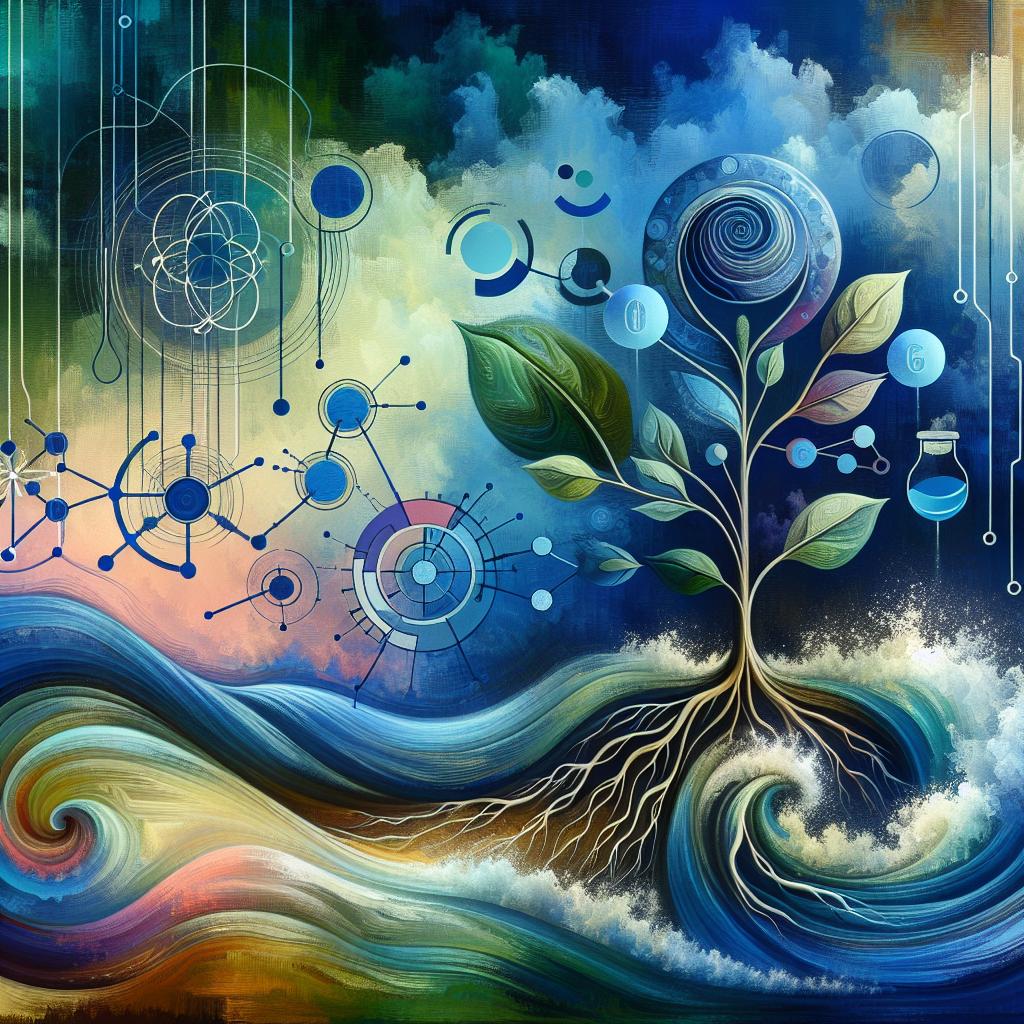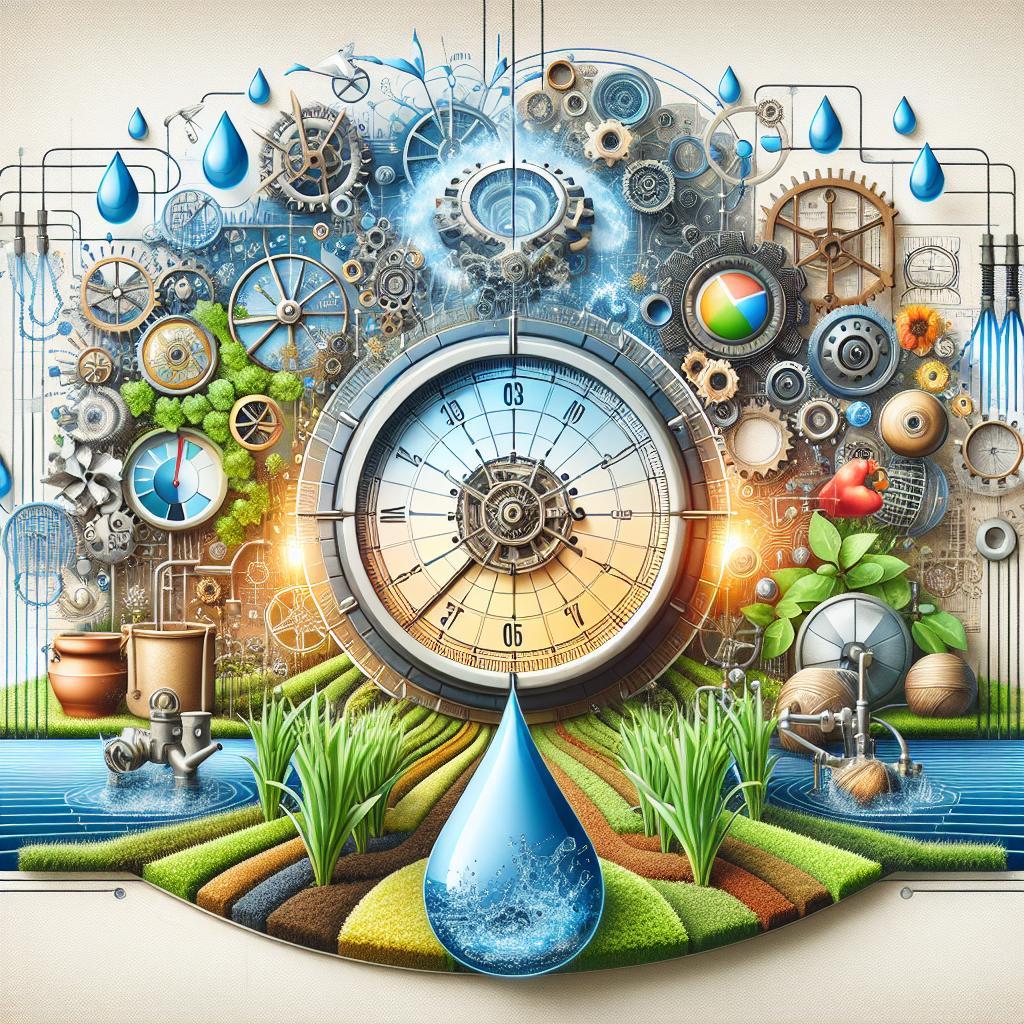This post may contain affiliate links which means I may receive a commission for purchases made through links. Learn more on my Private Policy page.
Title: “Nurturing Nature: The Art of mastering Irrigation System Performance Through Timing”
Introduction:
In the vibrant tapestry of agriculture, where the whispers of the wind meet the symphony of nature, the lifeblood of thriving crops ofen pulses through vast networks of irrigation systems. Though, like an orchestra playing out of sync, even the most sophisticated installations can falter without the right timing and scheduling. Imagine pairing perfectly timed rainfall with a well-orchestrated irrigation schedule—this harmonious duet can lead to lush fields, robust harvests, and a healthier planet.
Welcome to our deep dive into the world of irrigation, where we unravel the secrets to enhancing system performance. Get ready to discover practical tips and thoughtful insights that will not only nourish your plants but also conserve precious resources. Whether you’re a seasoned farmer, a budding gardener, or simply curious about the art and science behind efficient watering, this article invites you to embark on a journey towards greener pastures and happier crops. Let’s turn the dial on your irrigation strategy and watch the magic unfold!
Understanding the Science of Plant Water Needs
Understanding how plants get their water is crucial for optimizing irrigation systems. Each plant species has unique water requirements influenced by factors such as age, size, and type. The root structure plays a significant role in how effectively a plant can absorb moisture. Moreover, environmental factors like climate, soil type, and weather patterns contribute to a plant’s hydration needs. To ensure adequate watering, consider the following aspects:
- Plant Type: Different plants have varying water needs—some thrive in arid conditions while others require consistently moist soil.
- Soil Composition: Soils that retain moisture, like clay, will necessitate different irrigation schedules compared to sandy soils that drain quickly.
- Seasonal Cycles: Plants may need more water during their growth phases than in dormancy.
By tailoring your irrigation scheduling to these needs, you can significantly enhance water efficiency. One effective strategy is to implement a crop water use table, which helps in estimating the water requirements based on various growth stages. Here’s a simplified example:
| Growth Stage | Water Requirement (inches/week) |
|---|---|
| Seedling | 1.0 |
| Vegetative | 1.5 |
| Flowering | 2.0 |
| Harvest | 1.2 |
by studying these factors carefully, you can implement a smart irrigation strategy that not only meets plant needs but also conserves precious water resources. Patience and observation will lead you to discover the sweet spot for tuning your irrigation system performance.

Crafting a Schedule: Aligning Irrigation with Weather Patterns
To maximize the efficiency of your irrigation system,it’s essential to synchronize your watering schedule with the prevailing weather conditions. this can significantly minimize water waste and promote optimal plant health. By monitoring local weather forecasts and using innovative technology such as weather stations or smart irrigation controllers, you can easily adjust your irrigation timings. Consider these strategies to create an effective irrigation schedule:
- Monitor Rainfall: Regularly check rainfall amounts to adjust irrigation frequency.
- Temperature Awareness: Increase watering during hotter days and reduce it during cooler spells.
- Humidity Levels: High humidity can reduce evaporation rates; tailor your schedule accordingly.
- Wind Conditions: Windy days can dry out soil quicker, necessitating extra watering attentiveness.
Creating a proactive irrigation schedule not only conserves water but also protects your plants from stress caused by over or under-watering. Here’s a simple table to help visualize a basic weekly irrigation plan based on weather patterns:
| Day | Temperature (°F) | Rain Forecast | Irrigation Suggestion |
|---|---|---|---|
| Monday | 75 | 0.1 in | Reduce by 25% |
| Tuesday | 85 | 0 in | Water fully |
| wednesday | 90 | 0 in | Water fully |
| Thursday | 70 | 0.2 in | Skip watering |
| Friday | 80 | 0 in | Water fully |

Transforming Technology: Smart Tools for Optimized Timing
In the ever-evolving world of agriculture, harnessing technology to enhance irrigation systems is essential for maximizing efficiency and conserving valuable resources. Implementing smart tools can drastically improve timing and scheduling, ensuring that crops receive the optimal amount of water exactly when they need it. By utilizing sensors, weather forecasts, and advanced automation systems, farmers can make informed decisions that reduce water waste and boost crop yields. The following smart techniques can help refine your irrigation strategy:
- Soil Moisture Sensors: Monitor the water content in the soil, allowing for precise irrigation.
- Weather Predictive Models: Provide insights into upcoming rainfall, enabling adjustments to schedules.
- Automated Irrigation Systems: Use timers and remote sensors to deliver consistent watering without manual intervention.
Alongside these innovations,understanding the ideal timing for irrigation based on crop type is vital.Each plant has unique requirements, and a generic approach can lead to under or over-watering. By incorporating data from smart tools into a scheduled irrigation plan, farmers can create a tailored watering timetable that aligns with specific crop needs and environmental conditions. The following table illustrates how various crops benefit from different irrigation schedules:
| Crop Type | Irrigation Timing |
|---|---|
| Tomatoes | Morning, twice a week |
| carrots | Evening, every other day |
| Lettuce | Midday, daily |
By leveraging these smart tools for timing and performance optimization, farmers can not only improve their irrigation systems but also contribute to a more sustainable approach in agriculture. Consistent monitoring and data-driven decisions pave the way for healthier crops and more efficient water usage, leading to a resilient farming practice that thrives in a modern landscape.

Mastering Maintenance: Keeping Your Irrigation System in peak Condition
Maintaining your irrigation system is crucial for ensuring optimal performance and longevity. Regular checks and meticulous upkeep can prevent inefficiencies and costly repairs. Here are some key practices to incorporate into your routine:
- Check for leaks: Inspect all pipes and connections for any signs of leakage that could waste precious water.
- Clean filters and nozzles: Clogged components can reduce water flow, so cleaning them regularly is essential.
- Adjust sprinklers: Position sprinklers to avoid watering sidewalks and driveways, ensuring water reaches only your plants.
- Monitor weather patterns: Keep an eye on local forecasts and adjust your irrigation schedule accordingly to maximize efficiency.
Implementing a proper scheduling strategy can dramatically enhance the effectiveness of your irrigation system. Understanding the water needs of your landscape is vital, as different plants may require varying amounts of moisture. To make scheduling easier, consider the following:
| Plant Type | Watering Frequency | Best Time to Water |
|---|---|---|
| Ornamental Grasses | Every 1-2 weeks | Early morning |
| Flower Beds | Every 2-3 days | Late afternoon |
| Vegetable Gardens | Every 3-5 days | Early morning or late evening |
By tailoring your irrigation schedule to suit the specific needs of your garden, you not only promote healthier plant growth but also conserve water—a win-win for both your landscape and the environment!
Future Outlook
As we wrap up our dive into the world of irrigation system performance, it’s clear that the right scheduling and timing can transform your garden or farm into a thriving oasis. Just like a well-choreographed dance, each drop of water plays a vital role in nurturing your plants and ensuring a bountiful harvest. By embracing the art of timing and unleashing the power of smart scheduling, you’re not only optimizing water use but also fostering a flourishing ecosystem that benefits both your crops and our planet.
So grab that notepad, jot down your irrigation insights, and prepare to watch your little patch of earth flourish like never before! Remember, it’s about working with nature, not against it. with a sprinkle of patience and a dash of creativity, you can cultivate an irrigation strategy that’s as vibrant as your garden itself. Happy watering, and may your green thumb always find its rhythm! 🌿✨
This post may contain affiliate links which means I may receive a commission for purchases made through links. Learn more on my Private Policy page.

